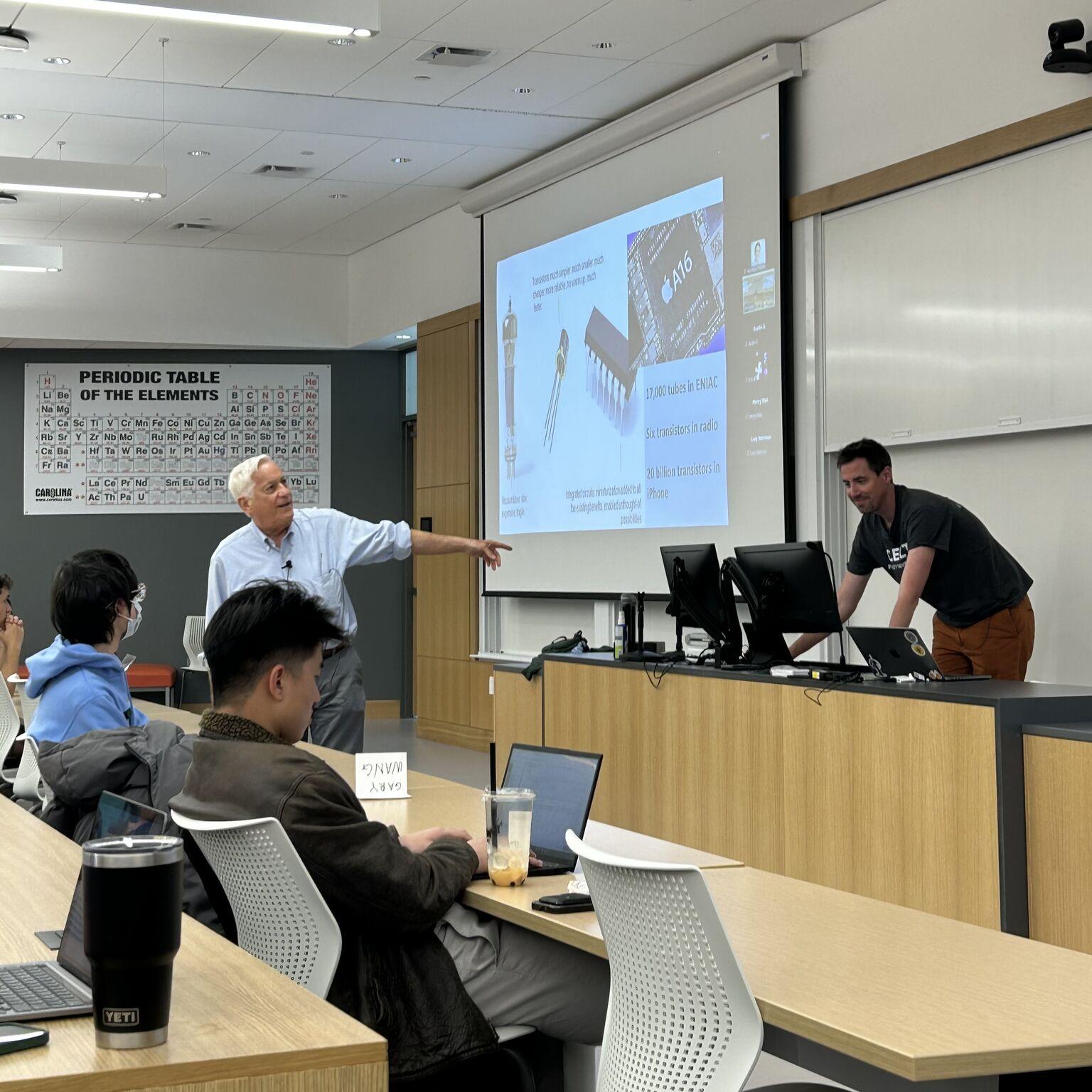Where STEM Meets Liberal Arts: The Digital Revolution, from Ada to AI
Tulane University’s School of Liberal Arts and School of Science & Engineering are collaborating on a compelling new course: “The Digital Revolution, from Ada to AI.” Co taught by historian and bestselling author Walter Isaacson and computer scientist Nicholas Mattei, the class explores the evolution of digital technology from its 19th century origins to the modern age of artificial intelligence.
The course is part of Tulane’s innovative STEM² program, which pairs faculty from liberal arts and STEM disciplines to teach students about the broader impacts of science and technology. Isaacson and Mattei’s class joins others within this series, such as “The Brain in Human Life” and “Climate and Society.” These interdisciplinary classes aim to highlight how analysis of complex modern issues (like AI) benefits from historical, social, and technical perspectives. “This is exactly the kind of initiative that makes Tulane a spectacular place to be,” said Hridesh Rajan, the dean of the School of Science and Engineering, of the new classes. “The blending of STEMM disciplines allows students to not only gain technical expertise but also develop critical thinking and a broader perspective on real-world issues.”
Drawing on his deep work on the figures behind computing history, Isaacson traces the arc from Ada Lovelace, the 19th century mathematician often credited as the first computer programmer, through the invention of the microchip and the rise of the internet, to today's AI systems. “I think it's really difficult to fully appreciate any kind of engineering if you completely remove it from the historical and social context that technologies grew out of,” Mattei says. Topics include how each technological leap altered society, economies, and creativity.
Mattei brings computational rigor to the classroom, highlighting the mathematics and algorithmic foundations of language models, logic puzzles, and the limitations of AI reasoning. He challenges the class to interrogate not just what AI can do, but how, why, and when it makes mistakes.
Rather than banning generative AI, Isaacson and Mattei encourage students to use ChatGPT as a learning assistant. In-class assignments have included writing prompts compared against AI-generated essays, poetic experiments, and student critiques of model-generated content. The professors treat ChatGPT as a provocation: an opportunity for students to understand the limits and possibilities of machine-generated text, and to develop critical evaluation skills.
Dean Brian Edwards shared that the class has been “hugely popular” since it launched. Edwards praised the way the course merges technical reasoning with institutional and social context, giving students a window into both the math and the broader implications of digital innovation.
Isaacson and Mattei are teaching this course during a pivotal moment in history: “The AI Revolution.” They see the course as more than theory. It’s a living laboratory where students and professors alike learn from AI’s successes and missteps. To them, the future of education must focus less on output and more on process, argumentation, and critical reasoning.
“It's hard to understand why the internet's designed the way it is, if you don't understand that the history of why it was made that way, or what it was trying to do specifically, be a redundant network, where everyone's treated the same,” Mattei says, “And that comes out of the Cold War [and] all kinds of political, social, and cultural events of the 70s, but that has big implication for what happens today… Like, why is hacking a thing? Why don't you need a government ID to get on the internet? Because in the 70s, we decided that this had to be this big, decentralized thing in case of nuclear war.”
The course stands out for its interdisciplinary pedagogy, merging history, technology, ethics, and engineering in a single classroom experience. It emphasizes real-world relevance, guiding students through the tools shaping the future, from foundational technologies like microchips to rapidly evolving innovations such as chatbots and large language models.
This pedagogical balance reflects the instructors’ complementary strengths. Isaacson brings decades of historical expertise and a storyteller’s gift for connecting past innovation to present-day dilemmas. Mattei, meanwhile, is “the crazy guy willing to teach programming to students who have never done that before”—a role he embraces enthusiastically.
At its core, the course encourages critical engagement, fostering a healthy skepticism and thoughtful evaluation of artificial intelligence’s promises, limitations, and broader societal impact.
In an era where AI tools are both celebrated and feared, “The Digital Revolution, from Ada to AI” offers students the rare chance to witness a revolution in real time and to understand its deep historical roots. It’s a class not just about technology, but about the human stories behind it and what those stories teach us about how to move forward.

